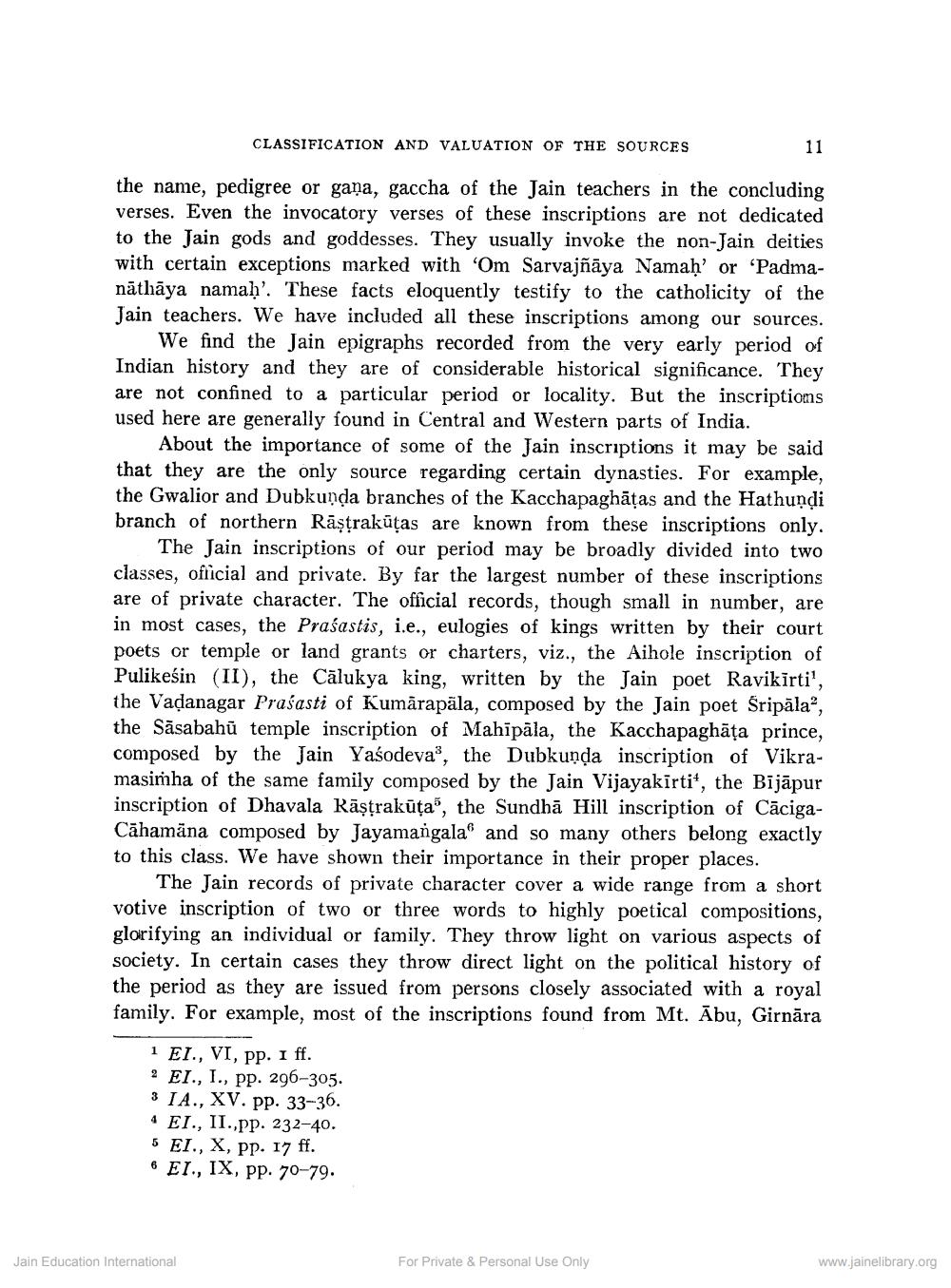________________
CLASSIFICATION AND VALUATION OF THE SOURCES
the name, pedigree or gana, gaccha of the Jain teachers in the concluding verses. Even the invocatory verses of these inscriptions are not dedicated to the Jain gods and goddesses. They usually invoke the non-Jain deities with certain exceptions marked with 'Om Sarvajñāya Namaḥ' or 'Padmanāthāya namab'. These facts eloquently testify to the catholicity of the Jain teachers. We have included all these inscriptions among our sources.
We find the Jain epigraphs recorded from the very early period of Indian history and they are of considerable historical significance. They are not confined to a particular period or locality. But the inscriptions used here are generally found in Central and Western parts of India.
About the importance of some of the Jain inscriptions it may be said. that they are the only source regarding certain dynasties. For example, the Gwalior and Dubkunda branches of the Kacchapaghātas and the Hathundi branch of northern Raṣṭrakūtas are known from these inscriptions only.
The Jain inscriptions of our period may be broadly divided into two classes, official and private. By far the largest number of these inscriptions are of private character. The official records, though small in number, are in most cases, the Prasastis, i.e., eulogies of kings written by their court poets or temple or land grants or charters, viz., the Aihole inscription of Pulikesin (II), the Calukya king, written by the Jain poet Ravikirti', the Vadanagar Prasasti of Kumarapala, composed by the Jain poet Sripala3, the Sasabahü temple inscription of Mahipala, the Kacchapaghata prince, composed by the Jain Yaśodeva", the Dubkunda inscription of Vikramasimha of the same family composed by the Jain Vijayakirti', the Bijapur inscription of Dhavala Rästraküța", the Sundhä Hill inscription of CâcigaCahamâna composed by Jayamangala" and so many others belong exactly to this class. We have shown their importance in their proper places.
11
The Jain records of private character cover a wide range from a short votive inscription of two or three words to highly poetical compositions, glorifying an individual or family. They throw light on various aspects of society. In certain cases they throw direct light on the political history of the period as they are issued from persons closely associated with a royal family. For example, most of the inscriptions found from Mt. Abu, Girnära
1 EI., VI, pp. 1 ff.
EI., I., pp. 296-305. 3 IA., XV. pp. 33-36.
4 EI., II.,pp. 232-40.
5 EI., X, pp. 17 ff.
6 EI., IX. pp. 70-79.
Jain Education International
For Private & Personal Use Only
www.jainelibrary.org




